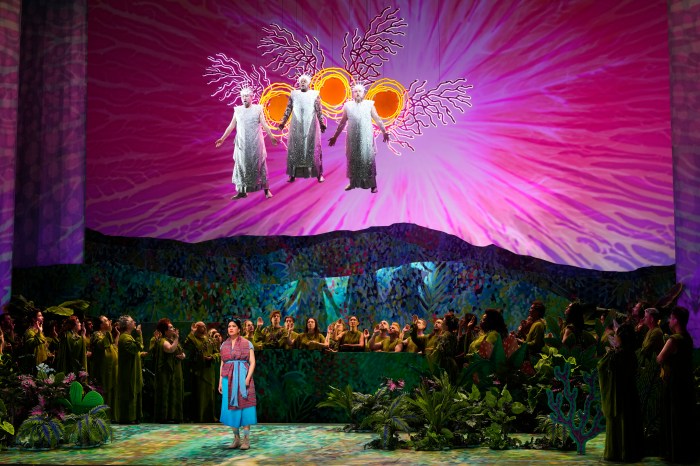Since Bob Dylan came to New York City in 1961, he has played more than 3,500 concerts around the world, but only one at Town Hall. It was his first major solo show, on April 12, 1963, and he was arguably already at the height of his folk-icon potency.
On Wednesday Dylan turns 76, and that night his music returns to Town Hall. Old Crow Medicine Show, the Nashville-based string band, is touring behind its remake of Dylan’s 1966 classic “Blonde on Blonde,” playing the complete album at each performance.
Old Crow’s commercial success is inextricably tied to Dylan. Founding fiddler and vocalist Ketch Secor penned the band’s platinum single, “Wagon Wheel,” from a Dylan outtake, and later collaborated loosely with Dylan on “Sweet Amarillo.”
These ties gave the current project “a green light,” but Secor still acknowledges that the move is brazen.
“I think there’s a certain level of audacity that goes into taking what’s arguably a masterpiece and retooling it, reworking it,” he said, during the tour’s first week.
But Secor’s motivation goes beyond homage. “I really want Nashville to lay claim to this great opus double album, pop music’s very first,” he said. “This is a Nashville record, and it’s hugely important.”
The Nobel Prize committee agrees. After Dylan won the literature prize last year, an Academy member suggested beginning any exploration of his work with “Blonde on Blonde.”
Nashville was integral to the album’s creation. Recording sessions began in New York City, but Dylan was unhappy with the results, so he went down to Nashville in February 1966 to record with session musicians, including Charlie McCoy, who played on “Desolation Row” and backed Johnny Cash, among others.
Secor credits McCoy with drawing Dylan to Nashville. “I think that he was the pied-piper, and Bob knew from Charlie’s playing on ‘Desolation Row’ that there was something about Nashville,” Secor said.
Dylan recorded his next three studio albums there as well, including a day’s worth of cuts with Cash.
Despite this, Dylan is not in the Country Music Hall of Fame, although McCoy and another “Blonde on Blonde” session player are.
Maybe that is because Dylan defies classification. As protean a musician as ever existed, he’s morphed from folk to rock to country to born-again to rockabilly to crooner.
These transformations cheered Old Crow. “The reinvention of his own songs helped us see why song is not a sacred thing,” Secor said. “Singing is, but not on the page and not on the record.”
Dylan devotees’ will likely find Old Crow’s singing the biggest modification. While Dylan puts almost limitless emotion and shading in a word or phrase, Old Crow’s voices are generally wide and chromatic.
“Visions of Johanna,” which Secor said represents “the kind of America that I feel I live in,” finds the group at its exultant and bright best, luxuriating in the lyrics.
But they can’t seem to make up their mind on the album’s last song, “Sad-Eyed Lady of the Lowlands,” resulting in a clutter of tempi that undermines the message.
Secor knows they “took some more liberties with that one” but said the decision was utilitarian. “It’s a dirge. You can’t close a show down on a dirge or you won’t get an encore.”
Dylan might disagree. At the end of his Town Hall show, the delirious audience begged for more. He recited a seven-minute poem about Woody Guthrie. And the folkies roared like tweens at a Taylor Swift concert.
IF YOU GO: Old Crow Medicine Show plays at Town Hall, Wed., 8 p.m., sold out, 123 W. 43rd St., thetownhall.org

















